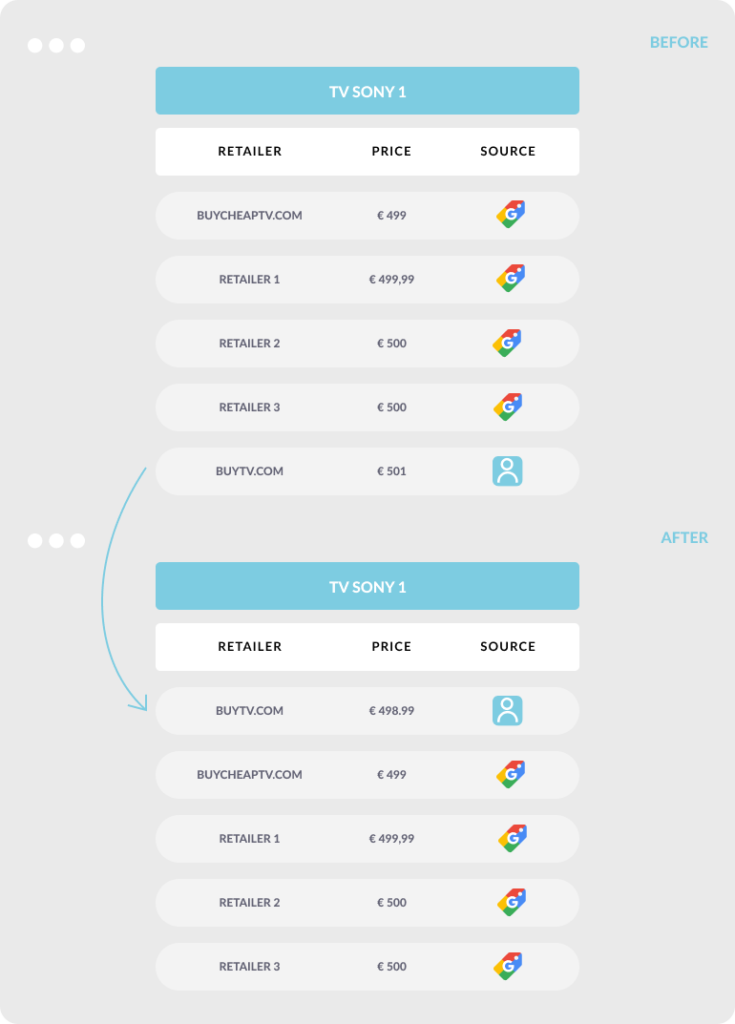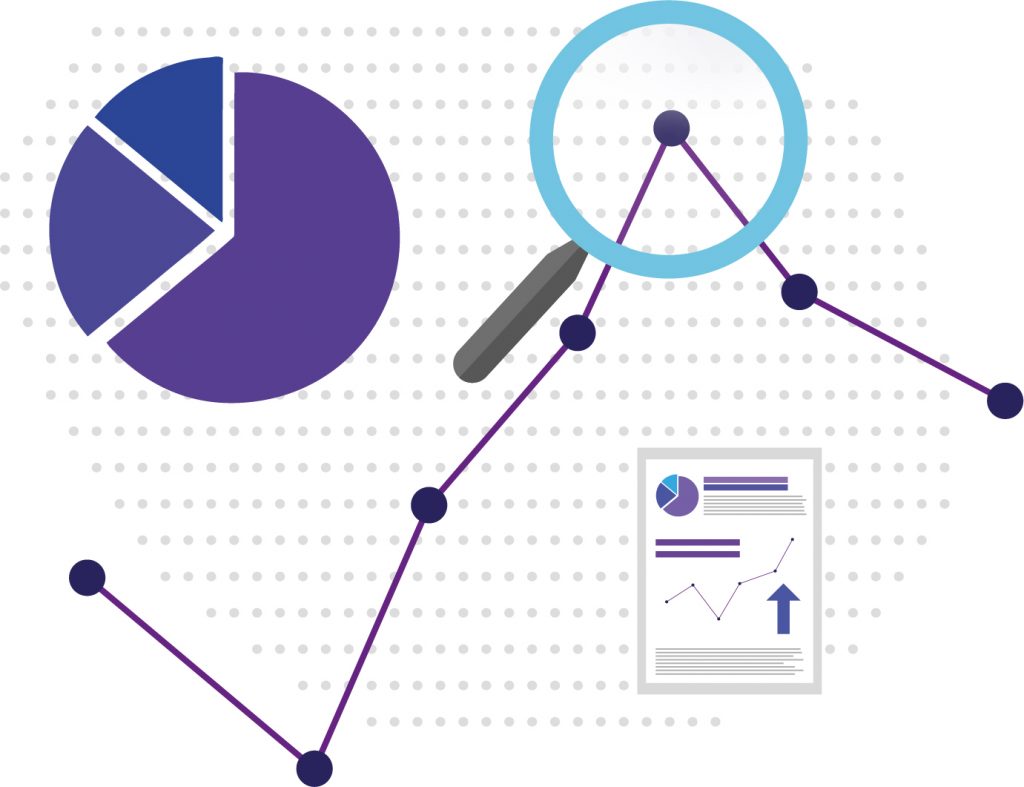Dynamic Pricing – Repricing for Shopify: How to Set & Optimize Your Prices for Maximum Profit
- 19 May 2023
Shopify is one of the most popular e-commerce platforms out there, with a market share of slightly over 10%. If you operate in North America or even in Europe, there is a chance your store runs on this platform. In this post, we want to show you how you can use dynamic pricing (repricing) when selling products online using Shopify.
In 2023 the number of e-commerce platforms, both global and local ones, is simply staggering. There are so many options; it’s oftentimes difficult to make an informed decision. That’s why many companies decide to go with the big players and simply pick open-source platforms like WooCommerce (if they use WordPress) or paid solutions such as Shopify.
When you take a look at any chart showing the most popular e-commerce platforms worldwide, it is likely Shopify will be on this list:

Source: https://www.statista.com/statistics/710207/worldwide-ecommerce-platforms-market-share
According to Statista, with a 10.32% market share, Shopify is the fourth most popular e-commerce platform in the world. And there are some good reasons for that.
Why is Shopify so popular?
Shopify is a Canadian e-commerce platform launched in 2006. It was created because owners (Tobias Lütke and Scott Lake) were dissatisfied with the shopping experience they encountered at the time. They wanted to create a platform that’s easy to use and intuitive, both for store owners and their customers.
Today, Shopify is valued for a number of reasons:
- Ease of use: Shopify offers a user-friendly interface and intuitive tools that make it easy for anyone (even less tech-savvy people) to set up and manage an online store. It provides a simplified and streamlined process for building an e-commerce website, managing inventory, processing payments, and handling shipping.
- Customization: Shopify comes with a wide range of customizable themes and templates, so you can create exactly the store you want.
- Scalability: Shopify works whether you have 10 or 10,000 products in your offer. This platform can easily handle high volumes of traffic and transactions without compromising performance. As a cloud-based platform, it also eliminates concerns about hosting and infrastructure management.
- Integrations: That’s one of the biggest advantages of this platform. Shopify can be integrated with hundreds of tools and third-party apps and plug-ins. They even have their own app store just for that. And when it comes to payments, Shopify offers its own payment system called Shopify Payments.
Additionally, Shopify is 100% mobile-friendly which is crucial from both SEO and UX perspectives, and there’s a big community of developers and store owners working with this platform, so you can easily find answers to your questions or deal with potential problems.
So, if you own an online store that runs on Shopify, you have access to tons of external tools and IT solutions. And dynamic pricing surely is one of them!
What is Dynamic Pricing (Repricing)?
Put shortly, dynamic pricing is an advanced pricing strategy that employs intelligent algorithms that monitor market conditions as well as your customers’ behaviors and use this input to set and maintain optimal prices that attract customers and are profitable to you, the seller.
Dynamic pricing algorithms operate within the predefined rules set by you (so that they don’t set the price below the profitability threshold), but the majority of work is done automatically. These algorithms constantly adjust prices in your store to ensure the good visibility of your offer, especially if you use price comparison engines like Google Shopping.
To show you how dynamic pricing works in real life, let’s use a quick example. Take a look at these listings, and pay attention to what happens with the BuyTV’s product price:

In the initial situation, our BuyTV’s offer is the most expensive one. As a result, for a customer who filters products by their price, this offer is in the fifth position, not the best place to be. However, if you take a closer look at other prices, you’ll see that the actual difference between BuyTV’s offer and the cheapest one is just 2.01 EUR. Is this a big difference? Surely, it’s not, especially when we’re talking about a product worth 500 EUR! But this insignificant difference was enough for BuyTV’s offer to land at the end of the offers list.
What would happen if the price was 2.01 EUR lower? BuyTV would jump in the first position and, most likely, sell more TVs thanks to better exposure. That’s what dynamic pricing does for you automatically. This tool continually looks for opportunities to adjust the product price so that it’s optimal in specific market conditions.
And no, dynamic pricing is not all about lowering prices. In many instances, if there’s room for such an adjustment, these algorithms can even increase the price so that you can make more money.
Benefits of using Dynamic Pricing (Repricing)
Once you understand how dynamic pricing works, the benefits of utilizing this solution become apparent:
- Maximize profitability: Dynamic pricing algorithms ensure your prices are always optimized for current market conditions. In practice, you can set higher prices during periods of high demand and lower them during periods of low demand. As a result, your offer is attractive all year round, and the effects of the silly season are minimized.
- Remain competitive: Dynamic pricing won’t allow you to be much pricier or much cheaper compared to other market players. This eliminates the risk of price wars.
- Manage inventory effectively: You can use this strategy to manage your inventory levels more effectively by pricing products based on their availability. By offering lower prices for items that are overstocked, you can clear out the inventory faster and avoid having to sell products at a loss or deal with a so-called dead stock issue.
- Save a lot of time: Lastly, with dynamic pricing, you don’t have to visit your competitors’ stores to see whether they’ve changed prices or started some promotions lately. Your prices are always up to date with what’s going on in the market. It’s like putting pricing on autopilot, giving you the opportunity to save time and focus on other areas of your online business.
We talk much more about how dynamic pricing works in this video, which we invite you to watch:
Are you ready to take your Shopify store to the next level? Dynamic pricing is the key!
How to use dynamic pricing in a Shopify-based store
If you want to use Dealavo’s dynamic pricing system, everything happens almost automatically. Our platform can be integrated with other IT solutions using API. It’s a common form of communication between two different tools or plug-ins. In essence, API is what makes two different IT solutions work together and exchange all the important data.
And speaking of data, for a dynamic pricing algorithm to work correctly, it needs your product information as input. Essential parameters that we need comprise:
- Product names
- EAN codes
- ASIN codes
- GTIN codes
Additionally, if you can provide the gross purchase price, that’s also very helpful, as knowing this cost enables you to set limits of suggested prices based on a minimal margin or markup.
Go to our integration subpage to find out more about how can your Shopify store be integrated with Dealavo’s system.
If you are interested in using dynamic pricing, you can ask for a free demo to see how this tool works in your online store. And if you need any help with integrating your online store with Dealavo, our team is happy to assist you with this process. Don’t worry; no coding or technical knowledge is required!
Start today, and let’s tweak prices in your online store!




